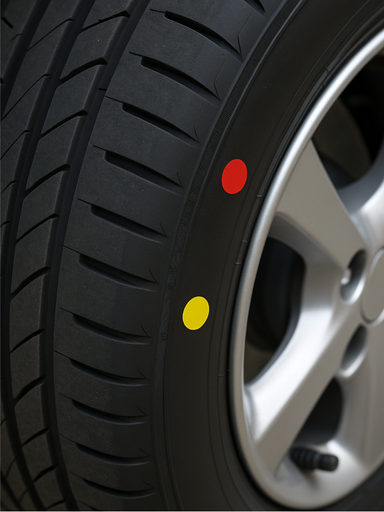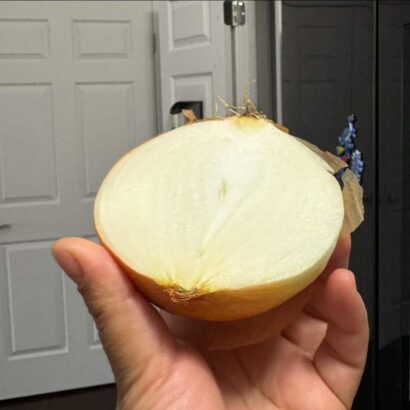What Are the Red and Yellow Dots on Tires?
These colored dots are factory-applied indicators used during the tire mounting and balancing process. They’re not flaws or branding—these dots are there to help technicians install your tires properly.
1. Yellow Dot – Lightest Point of the Tire
The yellow dot indicates the lightest part of the tire. To optimize balance, this yellow dot should be aligned with the valve stem, which is typically the heaviest part of the wheel.
- ✅ Why it’s important: Minimizes the amount of weight needed to balance the tire.
- 🚗 Where to align it: Line up the yellow dot with the valve stem when mounting.
Pro Tip: This helps ensure a smoother ride and can extend tire life by reducing vibrations.
2. Red Dot – High Point of Radial Runout
The red dot marks the high point of radial runout, which means the spot on the tire that may bulge out the most due to manufacturing variances.
- 🚨 Why it’s important: When a wheel also has a mark (like a dimple) indicating the low point of the wheel, aligning the red dot with it can minimize vibrations.
- 🧰 When to prioritize: If both a red and yellow dot are present and the wheel has a dimple, match the red dot to the dimple.
If your wheel does not have a dimple or mark, then align the yellow dot with the valve stem.
What Happens If the Dots Aren’t Aligned?
High CPC keywords: improper tire mounting, unbalanced tires symptoms
Misalignment of these dots during mounting won’t destroy your tires, but it can lead to:
- Increased road vibration
- Uneven tread wear
- Greater need for wheel weights to balance
- Decreased ride comfort
In performance vehicles, ignoring these marks can negatively affect vehicle handling and fuel efficiency.
Should You Be Concerned as a Driver?
Most of the time, you don’t need to worry. The colored dots are mainly a tool for tire technicians, but being informed gives you an edge when discussing service with your installer.
Ask your mechanic or tire shop:
- “Did you align the yellow dot with the valve stem?”
- “Did you balance the tire with minimal weight?”
Bonus Tip: When Replacing or Rotating Tires
Always make sure:
- The colored dots are still visible if the tires are new.
- If getting tires rotated, have them rebalanced to ensure proper wear and comfort.
Conclusion: Tiny Dots, Big Difference
The red and yellow tire dots may be small, but they play a big role in your vehicle’s performance and safety. Proper alignment during mounting leads to a smoother ride, better fuel efficiency, and longer tire life.
Next time you’re at the tire shop, keep an eye out for these dots—and impress your technician with your tire know-how!


